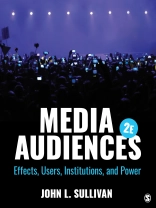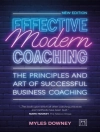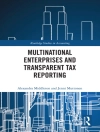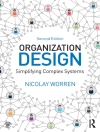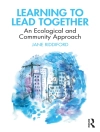Whether we are watching TV, surfing the Internet, listening to our i Pods, or reading a novel, we all engage with media as an audience. . Despite the widespread use of this term in our popular culture, the meaning of ‘audience’ is complex, and it has undergone significant historical shifts as new forms of mediated communication have developed from print, telegraphy, and radio to film, television, and the Internet.
Media Audiences: Effects, Users, Institutions, and Power 2nd Edition explores the concept of media audiences from four broad perspectives: as ‘victims’ of mass media, as market constructions and commodities, as users of media, and as producers and subcultures of mass media. The goal of the text is for students to be able to think critically about the role and status of media audiences in contemporary society, reflecting on their relative power in relation to institutional media producers.
İçerik tablosu
Preface
Acknowledgments
Chapter 1. History and Concept of the Audience
What Is an Audience?
History of Early Audiences
Audiences and Notions of Power
Conclusion: Constructing Audiences Through History and Theory
Discussion Activities
Additional Materials
References
SECTION I. AUDIENCES AS OBJECTS
Chapter 2. Effects of Media Messages
Origins of Media Effects Theories in the Early 20th Century
Mass Society Theory and the Payne Fund Studies
The War of the Worlds Broadcast and the Direct Effects Model
Mass Propaganda Concerns and World War II Communication Research
Postwar Communication Research: The Rise of the Limited Effects Paradigm
Effects of Media Violence
Conclusion: Enduring Concern Over Media Effects
Discussion Activities
Additional Materials
References
SECTION II. AUDIENCES AS INSTITUTIONAL CONSTRUCTIONS
Chapter 3. Public Opinion and Audience Citizenship
A Brief History of Public Opinion
Survey Methods and the Public Opinion Industry
Public Opinion and the Limits of Audience Constructions
How News Shapes Public Opinion
Conclusion: The Construction of Public Opinion and Its Implications for Democracy
Discussion Activities
Additional Materials
References
Chapter 4. Media Ratings and the Political Economy of Audiences
The Political Economic Approach to Communication
Political Economy and the Commodity Audience
Ratings and the Construction of the Audience Product
Measuring Audiences: The Ratings System
Ratings, Market Research, and the Audience Commodity: Assigning Market Value to Mass Audiences
Conclusion: How Effective Is Institutional Control Over Audiences?
Discussion Activities
Additional Materials
References
SECTION III. AUDIENCES AS ACTIVE USERS OF MEDIA
Chapter 5. Uses and Gratifications
Early Examples of Uses and Gratifications in Communication Research
The Uses and Gratifications Approach
Expectancy-Value Approaches to Uses and Gratifications
Social Uses of Media
The Uses and Dependency Approach
Conclusion: Refocusing on Audience Power
Discussion Activities
Additional Materials
References
Chapter 6. Interpreting and Decoding Mass Media Texts
The Rise of Critical Cultural Studies
Interpretation and Semiotics
Ideology, Screen Theory, and the Critical Paradigm
The Birmingham School and the Encoding/ Decoding Model
The Nationwide Audience Studies
Gender and Media Interpretation: Soap Operas, Romances, and Feminism
Cross-Cultural Reception of Popular Media
Race, Ethnicity, and Audience Decoding: Viewers Interpret The Cosby Show
Open Texts and Popular Meanings
Intertextuality and Interpretive Communities
Revisiting Encoding/Decoding in the 21st Century
Conclusion: Interpretation and Audience Power
Discussion Activities
Additional Materials
References
Chapter 7. Reception Contexts and Media Rituals
Media in Context: Notions of Space and Time
Media Reception in the Domestic Sphere
Media and Everyday Life in the Domestic Context
Media Rituals: Another Reception Context
Conclusion: Audiences in Context
Discussion Activities
Additional Materials
References
SECTION IV. AUDIENCES AS PRODUCERS AND SUBCULTURES
Chapter 8. Media Fandom and Audience Subcultures
Defining Fan Cultures
Fan Cultures and Interpretive Activity
Fans and Textual Productions
Fans and Cultural Hierarchy: The Limits of Textual Reinterpretation
Conclusion: Fans, Creativity, and Cultural Hierarchy
Discussion Activities
Additional Materials
References
Chapter 9. Online, Interactive Audiences in a Digital Media World
Digitalization, Fragmentation, Platforms, and the Rise of Audience Autonomy
Big Data and Online Audience Metrics
Audience Agency, Creativity, and Democratic Participation
Crowdsourcing Media Production: Wikis and Blogs
Questioning Audience Power in the Networked Information Society: Issues of Media Ownership, Surveillance, and Labor Exploitation
Conclusion: Networked Creativity Meets Undercompensated Labor
Discussion Activities
Additional Materials
References
Chapter 10. Conclusion: Audience Studies in an Era of Datafication
The Rise of Mobile, Transmedia Experiences in the Post-Network Era
The New Economics of Audience Aggregation
Rediscovering Media Audiences in the 21st Century
Charting a Course for Audience Studies: The 2030 Agenda
Conclusion
Additional Materials
References
Index
About the Author
Yazar hakkında
John L. Sullivan is Associate Professor of Media & Communication at Muhlenberg College in Allentown, PA. He earned his B.A. in German and Media Studies from Pomona College and his M.A. and Ph.D. in Communication from the Annenberg School for Communication at the University of Pennsylvania. Dr. Sullivan’s research explores the links between media industries and systems of social and economic power. More specifically, he focuses on audience constructions within media organizations, the implementation of U.S. media policies, and the political economy of cultural production. Recently, Dr. Sullivan has begun a longer-term project to study the political economy of free, open source software (F/OSS) movements.
